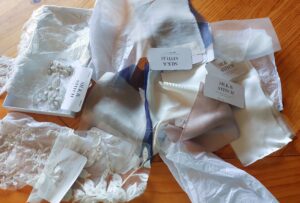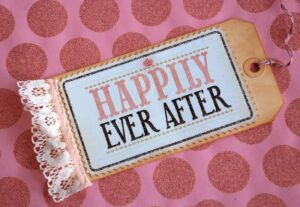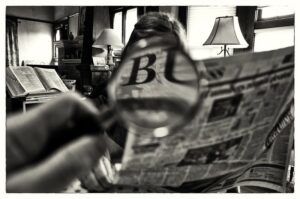Posts by Sophie Masson
When it comes to creating a believable setting or background for a work of fiction, sensory inspirations are very important. Writers need to evoke a world in the reader’s mind which doesn’t just involve the visual and the auditory, but also hopefully bring the other senses into play—touch, smell, taste. It’s always been important to me, as I’m sure it is for many other writers, to experience the atmosphere of places I’m evoking through my stories: I like to actually walk in their streets, to see small details, to hear the soundscapes, whether that be birds, sirens, music, machines, to listen to the tone of voices. I like to experience the smells—good or bad, strong or faint—of those places, and their tactile textures, and the taste of the food you might find there. The sensory impressions you gain from all of it are invaluable. Even if a place is imaginary, I always base it on real locations, so the sensory aspects still ring true. And that means also being able to call up those impressions even when you are back home, and not just through your memory, but through aids such as notes, photos, and video and audio clips.
That works well for the visual and auditory aspects. But what about the other senses—touch, smell, taste? Their effect cannot be fully recaptured through photos, notes, or video/audio. More ephemeral than the visual or the auditory, those three senses are nevertheless crucial to evoking atmosphere: think for example of Proust’s famous madeleines. And it’s not just about place—it’s also about many other elements in a story that will make your fictional world feel absolutely real in a reader’s mind. How, for example, to describe the taste of a dish, if you haven’t tried it? How can you evoke the scent of a particular perfume, if you’ve never smelled it? Or the feel of a particular fabric, if you’ve never touched it?
For me, the answer is to collect concrete objects that bring my story-brain into direct hands-on contact with the sensory experience itself. Over the years I’ve done a lot of that. For example, for a novel I’ve been working on, I needed to understand how different types of silk fabric and lace embellishments might interact with each other and be used in design. I didn’t just rely on my imagination, my lived knowledge of how silk feels against the skin and my observation of a seamstress at work. I also purchased a range of fabric and lace samples which would enable me to see and feel first-hand just how a particular design might work with types of silk fabric. For the same novel, where there is a small but significant mention of the perfume Joy, I didn’t just rely on my memory of my beautiful grandmother’s favourite scent, I managed to find a miniature bottle of the vintage fragrance online, so I could experience the full power of it, and be able to describe it properly. Similarly, in another novel, recently published, where I wrote about the look, smell and feel of various flowers, I needed to actually have some on hand so I could accurately evoke them. In yet another novel, which is centred around food, I didn’t just cook several […]
Read MoreSome writers have it in mind from the beginning, for others it might be last-minute addition, prompted by a publisher’s question or a sudden impulse. To dedicate or not to dedicate—that is the question.
Dedications in books are certainly very common. Of the seven books on my bedside TBR pile, for example, just two lack a dedication. One of these features an epigraph instead, a line from a poem which expresses something at the heart of the book, and the other has no dedication at all. The dedications in the other five books are all personal, addressed to important people in the author’s life, which are in fact the most common kinds of dedications. Occasionally, though, you might see a more general type of dedication, in the vein of ‘to all those who have been there’. And it’s not just a modern thing—dedications in books have been common for hundreds of years. They started as statements of gratitude to patrons—for example, Shakespeare’s famous, enigmatic dedication for the Sonnets (though some say it wasn’t Shakespeare but the publisher who wrote the dedication). Or even further back, 12th century French writer Chrétien de Troyes’ dedication of his extraordinary seminal work, Le chevalier de la charrette (the Knight of the Cart), which simultaneously launched the character of Lancelot, a massive craze for Arthurian romance, and, for a francophone like me, the birth of the novel (‘roman’ being ‘novel; in French). Chrétien dedicated the work to his patron, Marie de Champagne, daughter of Eleanor of Aquitaine, writing it as a graceful, sprightly poem which cleverly manages to avoid outright flattery, and a light touch that combines humor and gratitude. (If you read French, you can see it here.)
But from at least the 19th century, book dedications tended to be more personal. Looking up some famous book dedications as I was preparing to write this post, I found some that were basically mini-letters to family members or friends, such as CS Lewis’ affectionate message to his god-daughter Lucy in The Lion, the Witch and the Wardrobe, and John Steinbeck’s touching letter, for East of Eden, to a friend who was also his editor. Others, like PG Wodehouse’s rather acidly humorous dedication to his daughter Leonora, were like a mini-version of the author’s characteristic style, or more surprising in their form, like Carl Sagan’s lovely, poetic tribute to his wife Annie. Although never as popular as personal dedications, general dedications also started to become more common in the 20th century and beyond. For example, Agatha Christie wrote a tongue-in-cheek dedication of The Secret Adversary to ‘all those who lead monotonous lives.’ She also wrote many personal dedications, and you can read a compilation here). Jack Kerouac wrote a pithily disillusioned dedication, ‘To America, whatever that is’, in his book, Visions of Cody. If you’re interested in reading about more famous book dedications and their backgrounds, this oldie-but-goodie article from the New York Times in 1982, is worth a look.
Okay, so I did go down the rabbit hole a bit with my […]
Read MoreI’ve just come back from a wonderful month-long trip to France to visit family and gather material for a new book within my Paris series of adult novels. Written under the name of Sophie Beaumont, the first of these, The Paris Cooking School, came out in Australia last year and is to appear in North America this August. (The second one, A Secret Garden in Paris, comes out in Australia this November). And whilst I went to France with ideas already for what this new, third novel was going to be about, with clear ideas of what I needed to visit for my research, the trip also showed me a number of unexpected threads which will greatly strengthen the original idea and enrich the story. That got me thinking about how you always have to be open to the unexpected, not only when you are in the early stages of planning, as I am now, but also further along. In the early stages of planning and research, to be in the place where you plan to set the story will often offer that unexpected turn. All the reading in the world about a place doesn’t necessarily give you the full picture; you might miss little details that can act as catalysts for scenes or developments in the story. Later, sticking too close to your original plan can also mean you miss out on an interesting twist or a new direction your character might go in.
In my case, as it was at such an early stage, I had only vague ideas as to what my characters might do for a living. Being close to my family members and sharing their lives for a while inspired me in unexpected ways. Watching two of my sisters work at their brocante stands (brocante is kind of second-hand antiques, and brocante fairs are hugely popular, regularly held events in France) gave me an unexpected idea for how part of my central intrigue might work in an immediately satisfying sort of way. Seeing my niece work on an assignment for her couture school in Paris sparked off another notion. Visiting the old, but still-exisiting, art school my grandmother had once attended gave me an idea for setting because of its position in the street in which it’s situated. Although I’d seen it on Google street view, the perspective an actual visit gave me, and walking the street itself in the company of another of my sisters, was enough to develop images that will help to make that setting even more solid. I expect that as I begin to get into the story, other things I’ve seen or experienced during that month, even if they have little initial or apparent relevance to the theme of my story, may pop up as either small insights or more important plot points. And I’m open to that, at least up to a point.
Because of course you can also destabilize a story by allowing the unexpected to completely take over; so you need to be aware of when that might happen. In my experience, this is especially marked around characterization, especially in taking the decision to add or delete a minor character because of an unexpected […]
Read MoreIt’s always a buzz to go into a bookshop in a city you haven’t been in for a while and see copies of your book still there, prominently displayed, months after publication. The perfect occasion, you think, to sign a few and have that attractive Signed Copy sticker on the front! But what if you haven’t organised a book signing in that particular shop? Is it okay to go in and ask to sign them?
In my experience, yes—it is always worthwhile. Booksellers like to have the Signed Copy sticker on the front too, an extra something to attract the customer’s eye and maybe nudge them over the line to purchase. And if you time your impromptu visit well—e.g. when it’s not too busy in the store—it’s been my experience that you can have great chats with booksellers and gain valuable information about how their customers are responding to the book in their particular area, what they themselves think are its strong points, etc.
If you handle it well—not as a hard sell but as an opportunity to make a connection and express your appreciation for the work they do selling your book—then people tend to respond very positively in my experience. It makes the possibility of handselling much more likely, as you and your book will be much more memorable to an individual bookseller moving forward. And that may also mean they will order more copies, if they run out.
It can of course feel a bit nerve-wracking to go in cold, especially in the bigger bookshops, and ask if you can sign copies of your book, but think about it as a micro form of market research as well as an opportunity to attract a bit more attention to your book and to yourself as an author. If you do this with several different bookshops with different clienteles within a certain designated area, in what is basically an impromptu book-signing tour, then you will gain an understanding of what works in one place as against another. Chatting with each bookseller, comparing how different shops have positioned the book, can also give you ideas and hooks for social media posts and reels.
In fact I would go so far as to say I have had more success with impromptu book signing visits than those which have been organised ahead of time and have required the bookseller to position you at a table and wait for customers to come to you. And it makes it less anxious for me as an author, too—nothing more humiliating than sitting at a signing table for ages, pretending to look nonchalant, while hoping someone might stop by the table with a book to sign!
Just a few quick tips:
Read More
Illustration by Lorena Carrington.
There’s a character in a novel I’m writing at the moment who, despite having passed on some time before the beginning of the action, haunts the story. Not in the literal way of a ghost story, but their memory and influence shapes a good deal of what one of the main characters does, which has ripple effects on other characters and on the narrative itself. This shadow character is key to the story but not a main character as such. It’s not an easy one to write, because their actions in the past can seem incomprehensible and even abhorrent at times. Yet, in order for the main character to progress in their own life, they need to come to terms with those actions, to understand and possibly to forgive them.
Developing a shadow character who isn’t particularly sympathetic and who only appears through the eyes of others remembering them, never speaking for themselves, has been quite a tricky task. How a) do you make them seem fully rounded, and b) how do you avoid readers disliking them so much they lose patience with the story itself?
I knew that I must not let my own feelings about their behavior taint my portrayal of them. I had to be as objective as possible whilst also conveying the very real effect the shadow character’s actions had on different people’s lives. I had to subtly indicate possible reasons for why the shadow character behaved as they did, yet not make it too obvious, either. It’s not necessary to turn them into a more likable character, but at the same time they need to be at least relatable so readers don’t completely write them off. It’s quite a balancing act—but so far, it’s working!
On the other side of the coin to the enigmatic shadow is another important type of character whose inner thoughts and feelings readers are not privy to, except through the reactions of the main characters. Like the shadow, they aren’t main characters, but they are also very important, key to the development of the story. And, as in the case of the shadow, you only see their inner selves reflected through the eyes of others. But unlike the shadow, they are highly attractive. And they can speak for themselves, because they are physically present, not shadows at all. In fact, hearing their voices whilst seeing them purely through the eyes of one of your main characters can enhance their presence and appeal, sometimes so strongly, especially in the case of a love interest, that it feels as though you are being swept away in that powerful feeling yourself.
But in the development of a highly attractive character like that, you also have to stay objective, whilst completely conveying the strong effect that person is having on your main character. It’s not necessary to create gratuitous flaws in such a character to nuance their appeal, but the reader also needs to feel that they are relatable human beings with their own understandable imperfections. It’s another kind of balancing act—yet a most enjoyable one, which also seems to be working!
I’d love to hear about your own experiences, as writers and/or readers, regarding these types of characters. […]
Read MoreI’m just at the very end of the editing process for an upcoming novel of mine, and it’s got me thinking again about the extraordinary job of an editor, and how it’s such a wonderful thing working with them to unearth the final shape and polish of your creation. In my many years as a published author, with many books out there, I can count on less than the fingers of one hand the numbers of times I’ve had a less than good experience with editors. In my experience, they are dedicated, meticulous, intelligent, discreet yet honest professionals who respect both the creative work they are editing and the principles of their craft. In some cases, depending on the book, they’ve helped me to unlock a knotty problem of narrative; or saved me from a continuity error; or helped to polish a less-than-perfect phrase so that it shines as it was intended to.
Because I’m a writer whose first drafts are quite strong—mostly because in fact they are only first drafts in theory, as when I am writing I tend to go over the chapter I wrote the day before I start on the next chapter, and at the end of the week go over again the chapters I’ve written—I tend often not to get big structural edits, but rather more of a light going-over to check structure, then move straight into the first copy-editing. This is quite a forensic process, looking at every aspect of language, as well as continuity, errors of timing or description, and awkward phrasing, rather than plot architecture or characterization overview. It’s about detail, not big picture, and I love this stage, working with the editor to bring out the very best of the details in my novel, so that they can highlight and illuminate my story and my characters. I don’t always agree with the editor; sometimes I will decline a change, and explain my reasons; sometimes, too, the editor’s comments help to inspire me to find a new, different solution. Mostly, though, I agree with their suggestions, because they are based on such a close and careful reading of my work.
The first copy-edit is usually followed by one or two more copy-edits, then the proof, then final pages, each of which is sent to me for review. And each time, as the files go back and forth, something is caught by the editor, some tiny thing that slipped through in the first stages, or some tiny tweak that just gives that final, final buffing of polish. It’s a meticulous but also exhilarating process, as I go through the stages and each time there’s an improvement to my book, no matter how small or subtle. And that goes both for the long works, like novels, and the short works, like picture books (which can in my experience go through as many edits as a novel).
Photo of ‘the invisible editor’ reproduced with permission from ‘Inside Story: the wonderful world of writing, illustrating and publishing children’s books’ (UPA Books, Australia, 2022)
I know that there can be problems with writer/editor relationships; I know that sometimes they aren’t a good fit. In my own career, as I mentioned earlier, […]
Read MoreArmidale autumn street(photo by Sophie Masson)
Although I was brought up partly in Sydney, Australia, and partly in France where I’m originally from, over the whole of my professional career as a published writer, I have lived and worked in the New England high-country region of New South Wales (Australia). We are only a few kilometers from the university town of Armidale, which itself is about half-way between the major State capitals of Sydney (NSW) and Brisbane (Queensland). By halfway I mean 500 kilometers from each (around 311 miles). It’s quite a trek, as you can imagine, to either city—seven hours by car or train, one hour by (expensive) plane. So it’s not exactly something you do every day or every week or even every month!
Anyway, our highlands region, even if remote from major cities, has a thriving literary and artistic scene, both historically and now. Quite a few writers and illustrators have made their home here. As well as the university, good public libraries and great art galleries, our region also boasts an excellent Writers’ Centre, which runs sessions online and in person. I love living in New England and from the beginning, felt that its peace, natural beauty, housing affordability and welcoming, diverse community gave us as a family the perfect environment in which to live—and for me to write! But I also knew that despite its rich literary resources and academic opportunities, and despite the fact that many of the challenges I faced as a creator were similar to those of my peers in, say, Sydney, there were some that were unique to my situation as a writer living and working in a regional community. What it boils down to, in a big, sparsely-populated country like Australia, distance and accessibility were and are issues for writers based outside of the State capitals. These issues can partly be overcome today because of the internet, Zoom, and social media. Day-to-day writing business is just as easy to run from a regional writer’s desk as a city-based one. But the issues still loom quite large when it comes to successful/regular networking and being considered for in-person speaking gigs and workshops. Your travel costs are likely to be a good deal higher than those of city-based writers, an understandable consideration for organizers. The opportunity to speak face-to-face with agents and publishers is limited, as pretty much all of them are based in cities.
I can’t really say it’s restricted me, though I’ve had to be nimble and make certain accommodations. Rather than just concentrating on my own experience, I spoke to a few other writers/creators, in different genres, who are also based in our region, about their experiences. Here’s just a few things they had to say:
‘You have a different perspective as a writer because in country communities you mix with people from various social strata, rather than just your own social strata or interest group.’ (Speculative fiction writer)
‘In a regional community you can feel that you can be part of the creative community and make a difference. I think it is easier to have a voice and be able to contribute. I think […]
Read More
There’s a lot to be said for and against prologues, as WU contributor Dave King has pointed out in two excellent posts recently. But what about epilogues? Certainly not all novels have them. Certainly not all novels need them. And like prologues they can have a bit of a mixed reputation. But used judiciously, they can be useful narrative tools, enabling the ‘what happened next’ curiosity of the reader to glimpse where the characters will be in the future. They can feel satisfying to the reader. But badly done, they can feel like something just tacked on for the sake of it: worse still, they can feel like they jolt you out of the story-world you have just been immersed in, tying up too many things that perhaps you might have preferred, as a reader, to simply imagine.
Traditional and classic literature frequently uses both epilogues and prologues: Shakespeare, for example, has both in many of his plays. Like his prologues, his epilogues are short and concise. They serve to remind you are leaving behind the world of the play but can now reflect on the sad or happy fate of the characters. Fairy tales meanwhile have a minimalist version of epilogue, briskly informing you that the heroes of the tale ‘lived happily ever after’, occasionally with a rider that bad characters meet a sticky end 😊
Epilogues in novels, however, rarely are as short and brisk! Unlike prologues, which are mostly found in speculative fiction and crime fiction, occasionally in YA but very rarely in children’s fiction, epilogues can be found sprinkled across most genres, including children’s fiction. A famous example of that is in the last Harry Potter book, Harry Potter and the Deathly Hallows, where JK Rowling took her characters far into the future to show them to readers as adults. As well as carrying the characters further, the epilogue served to indicate firmly to readers that the saga was over, and there wouldn’t be another book featuring the adventures of Harry, Hermione, Ron and the rest of the gang.
I’ve used epilogues in several of my own books. Each time, it was for a very specific purpose: for example, in my YA speculative fiction work, The Ghost Squad (2021), which also has a prologue, I used the epilogue to allow readers to see my hunted characters in a space where they might be safe-at least for a while. I’d been in two minds about writing a sequel: so I wrote the epilogue to be both satisfying in itself, and to provide a possible hook, should I decide to keep going into another book. In the end I decided not to write the sequel; but the epilogue still worked, because I hadn’t ended it on a cliffhanger. It gave a glimpse into the future world of the characters, without having to pursue it. With another recent novel, an adult one called A Hundred Words for Butterfly (produced first as an audio novel), an epilogue, set a week or so after the last scene in the last chapter, worked well, giving me the opportunity of both offering a glimpse into the future, but also clearing up something […]
Read More
In life, people’s days are punctuated by meals. Food is an important part of our lives: of course, we need it for survival, but it’s much more than that. It’s pleasure, it’s penance, it’s anxiety, it’s joy—depending on our relationship with it. Eating together or alone, eating at home or out in restaurants and cafes, eating on the go or around the family table: it’s all part of the fabric of human life, all over the globe.
And in fiction? Well, it always used to puzzle me, as a kid, when people in books never stopped to eat or drink or you never got to hear what was for lunch, if it was mentioned. For me as a child, it was important to know: my diary as a twelve-year-old is full of mentions of the delicious things my mother had cooked up for us that day, or the yummy thing I’d bought at the school canteen that day (which my mother would have considered rubbish) or, conversely, the yuckiness of something I’d been made to try by a friend, such as vegemite—an Australian classic but not to my taste. Sure, I’m from a French background and food was intensely important in our family, but we certainly weren’t alone in that. To read a story in which there was no mention of food at all seemed odd. But to read one in which exotic delights like ginger pop (as in Enid Blyton) were mentioned—often!—was such fun. I had no idea at the time what ginger pop was but it sounded exciting, like the adventures the Famous Five or Secret Seven went on. And when Edmund, in The Lion, The Witch and the Wardrobe, is offered endless Turkish Delight by the White Witch to bribe him to betray his siblings, I was horrified, but understood. Hard to resist Turkish Delight! Growing up through adolescence and into adulthood, I never lost my interest in food and cooking, and never ceased to wonder why in some novels, people seemed to exist on air.
Read MoreIt’s such a basic part of the framework of writing that sometimes we forget how effective it can be, playing around with it. I’m talking about tense, and how varying it within a story, from past to present and vice versa, and even adding a touch of the future, can really help to increase tension/suspense, even within a short span of text, and even if we mainly stick with one tense or the other.
I’m sure we’re all familiar with examples of how writers have done this effectively, but instead of simply quoting from those, I’m going to demonstrate the tense switcheroo by starting with a classic-style opening that simply invites the classic-style past tense: Once upon a time, there was a lonely princess who’d lived by herself for years, in a castle made of iron.
Now you could simply go on with She had lost her parents at a young age and it was a long time since anyone had come to visit. OR you could ditch the past tense at that point and instead go on to say: It’s a long time since anyone has come to visit, but the princess still waits in hope that her parents might come back one day to the iron castle. And immediately there you have a little mystery, a dash of tension, a hint of suspense, just from that simple switch from past to present.
You could also do it the other way round, to make for more pathos and create a bit of backstory: Today the lonely princess waits in the iron castle, hoping for good news. Once upon a time, she was the cherished only child of her parents, but she had lost them at a young age and since then no-one had come to visit.
A touch of the future can play its part as well, like this:
Once upon a time, the lonely princess sat at her window in the iron castle, as she’d done for years since she’d lost her parents and the visitors stopped coming. Little did she know that her grim and gloomy existence was about to change and that today will be the first day of a very different life.
Each variation of tense offers a different narrative path, despite the sameness of the basic material. That’s the simple magic of tense! And it can be a lot of fun to apply that to a story, not just at the beginning, but in the middle bits where the narrative might occasionally sag, or in climactic scenes where jumping from past to present makes the action so much more immersive, more cinematic even.
Of course you don’t want to switch around all the time in a narrative, certainly not in a novel and most likely not too often in a short story. You don’t want to annoy your reader or give them story-whiplash with too many flash-backs or fast-forwards. But with a judicious use of tense, you can create not only tension but sparks of surprise at various points in your narrative.
What are your thoughts on playing around with tense? As a writer, do you use it? And as a reader, do you like it?
Read More
One of the things that has struck me most forcibly throughout my career as a writer and, later, as publishing director of a small press as well, is how important good book design is. Humans are visual creatures and an unappealing, amateurish or confused design will turn us off immediately, even if we cannot explain why. A design that might be technically accomplished but too much ‘in your face’, overshadowing the content, is not right either. Great design is both invisible and yet very much present, working its stylish magic in the way that’s most appropriate to the book contents. Great design is crucially important of course for all kinds of illustrated and photographic books; but it’s also important for books that are centered on text, such as novels and narrative non-fiction. And that holds across the board, whether you are traditionally or self-published. It’s really worthwhile looking at award-winning book design, such as, in Australia, winners of the annual Australian Book Design Awards. Bad design conversely can be highlighted publicly, such as this ‘walk of shame’ list of badly-designed covers of classic novels.
Behind the magic is all sorts of hard work. In all books, design isn’t just about covers: it’s also about the internals. It’s not just about placement of text and images in an illustrated book; but also about how the pages of text-based books look. The type and size of font used, the spacing, margins, how title pages and other such ‘extra’ pages are presented, the placing of chapter headings, and much more to do with the layout generally: there’s a lot involved, which readers and even authors may not be specifically aware of but which publishers and designers work on together, closely. For the internals, font size and type are of course readily understandable in terms of design attractiveness and clarity but other more technical issues include putting text too close to the margins or too close to the bottom, where a reader’s hands might cover it, or the quaintly-named ‘widows and orphans’ problem of line-chopping, which can occur in typesetting and carry over into design headaches! For the cover, meanwhile, it’s vitally important that text and image work harmoniously together, that the cover image reflects the content and that the text be clear and stand out without overwhelming the image. There are also other aspects of the cover which have to be kept in mind, as designer Beattie Alvarez reminds readers in the recent book Inside Story: it’s not just about the front cover, but also the back cover, and the spine. All has to be designed so that it forms a harmonious whole.
With novels and other long text-based books, authors will be consulted by publishers on the general cover design but not usually on the internal design. However you can, of course, comment on it when you get to see it, and in that case it’s useful to be at least a bit familiar with how design works. If you are self-published of course you will have a lot more say—you will in fact need to work closely with the designer to decide on the full look of […]
Read MoreNewspaper articles, extracts from books, diary entries, audio transcripts, records of phone calls, email chains, text messages, social media posts: all of these and more can be and are used in novels to advance, enhance and extend the story. Supporting the ‘traditional’ narrative, these other forms can allow authors to embed information in a way that doesn’t burden the main narrative, which is especially useful when the novel is based on factual events. They can also provide a way to run parallel narratives or to provide alternative points of view on what is going on. Most of all they allow authors to create a richly-textured story-world with many varied strands to its narrative tapestry.
There are popular novels that ditch the traditional narrative form entirely, concentrating purely on those ‘other’ forms of telling the story. Two examples that spring to mind are Amie Kaufman and Jay Kristoff’s YA speculative fiction series, The Illuminae Files, which uses a variety of forms, from military files to emails, interviews to medical reports, to tell the story, and Janice Hallett’s crime novel, The Twyford Code, which is told entirely through transcripts of audio files from an old iPhone, including recorded phone calls. These books manage to create a satisfying and engaging story world, and make readers care about their characters without using traditional narrative forms at all. In this piece I’ll concentrate more on inserting those ‘other’ narrative forms into traditional narrative in order to enrich the texture of a novel. The most important thing to remember is that you need a real reason to use these different forms: they shouldn’t just be there because they can be. Of course, you should have fun with them too: but they need to feel like they really belong in your story.
I’ve always enjoyed using different narrative forms in my books and have used these extensively over the years. For example, in The Ghost Squad, a YA speculative fiction thriller published last year, I used extracts from contraband pamphlets, secret reports, extracts of unpublished manuscripts, and more, whilst also running a traditional narrative but told through two different points of view. In other novels, I’ve created short newspaper articles, notebook extracts, blog posts, transcripts of phone calls, emails, text messages and more, to extend and enrich the narrative and also sometimes provide factual information that might otherwise interrupt the story. It’s an enjoyable process, even if challenging at times!
So what have I learned over those years of using different narrative forms to tell a story? Aside from the key point I mentioned earlier, about having a real reason for integrating them, my advice is:
Read More
It’s a new year, and a new occasion to have another look at a fascinating topic. Almost ten years ago to the day, I wrote a piece for Writer Unboxed about book covers, so I thought this was the perfect time to muse again on the topic! And I thought I’d do that primarily through pictures, as befits the theme, in fact.
Like I wrote in that piece back in 2012, people do judge a book by its cover. A good cover makes you want to pick the book up, of course, and gives you that important first impression. And that goes not only for print but for eBooks and audiobooks. Now, we might all be able to quickly recognize a bad cover, and there are many fun sites that collect together particularly hilariously horrendous examples of these. But what actually makes a good cover is hard to pinpoint exactly. What works in one genre may not necessarily work in another, and what works in one market is likely not to work in another. This is especially so when you have editions of the same book—especially novels–in different languages, and often there’s a different cover, and sometimes a title change as well.
For example with my YA romantic thriller Three Wishes, (written under the pen-name of Isabelle Merlin), of five different editions(see pic) two(the English-language one and the Polish-language one) had the same cover and same title; the Indonesian-language one(middle one in the first row) had a different cover but the same title(interestingly enough, the title stayed in English, though the rest of the book didn’t); and the French-language and German-language ones had both different covers AND different titles (and each very different from each other, too!). For each edition, the publisher was looking at their market and what would work for them. So they will often focus on aspects of the story which may have particular appeal for their audience: for instance, in the case of the French edition, the love triangle is most forcefully brought out; in the German edition, it’s the mystery and enchantment; in the other three, it’s wish-fulfillment and French elements that dominate. The novel itself has all those things within it, but also a slightly spooky, Gothic aspect that’s not really brought out in any of the covers, aside perhaps from the German one.
Comparing covers of the same book across time too is an interesting exercise: just have a look at the various covers for Agatha Christie’s great classic, The Murder of Roger Ackroyd, which I have inserted below. The first collection consists of covers from 1926 (date the book was first published) to the 1970’s; the second features much more recent covers, and the third is of two contrasting recent editions: a paperback edition (published in December 2021), and a lovely illustrated hardcover Folio edition. By the way, this is just a small selection of the many covers of this book that have been created for the English-language market since 1926. (And that’s not even looking at editions in other languages!)
It’s really interesting to see the shift in colors, fonts, and what designers have chosen or been briefed to feature: the earlier ones […]
Read More





















